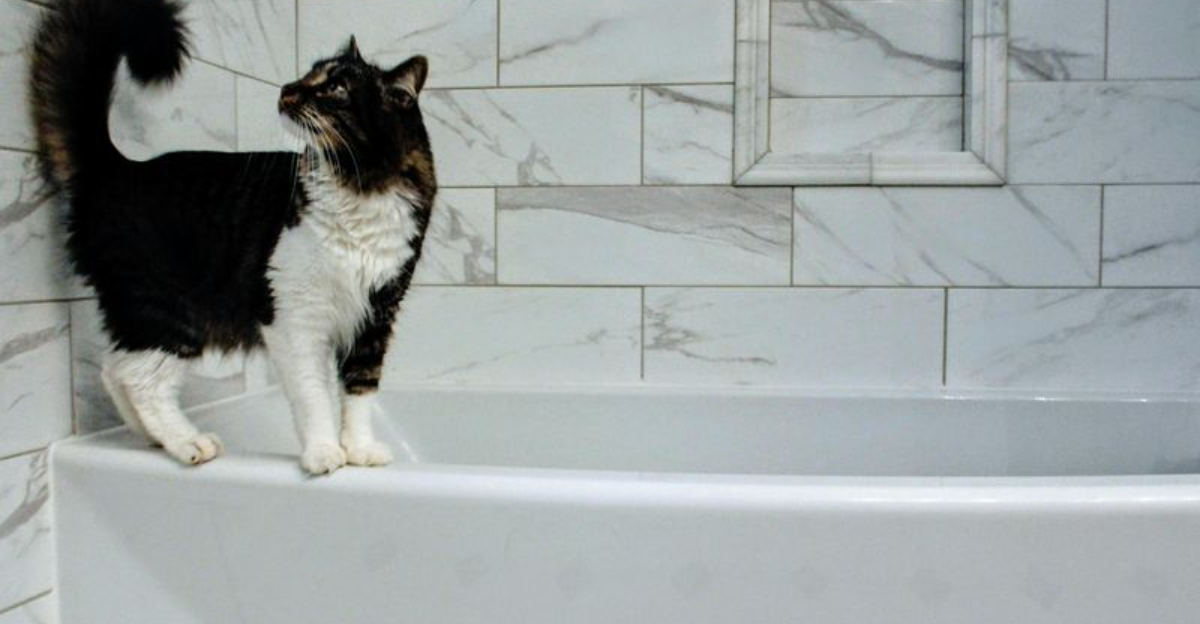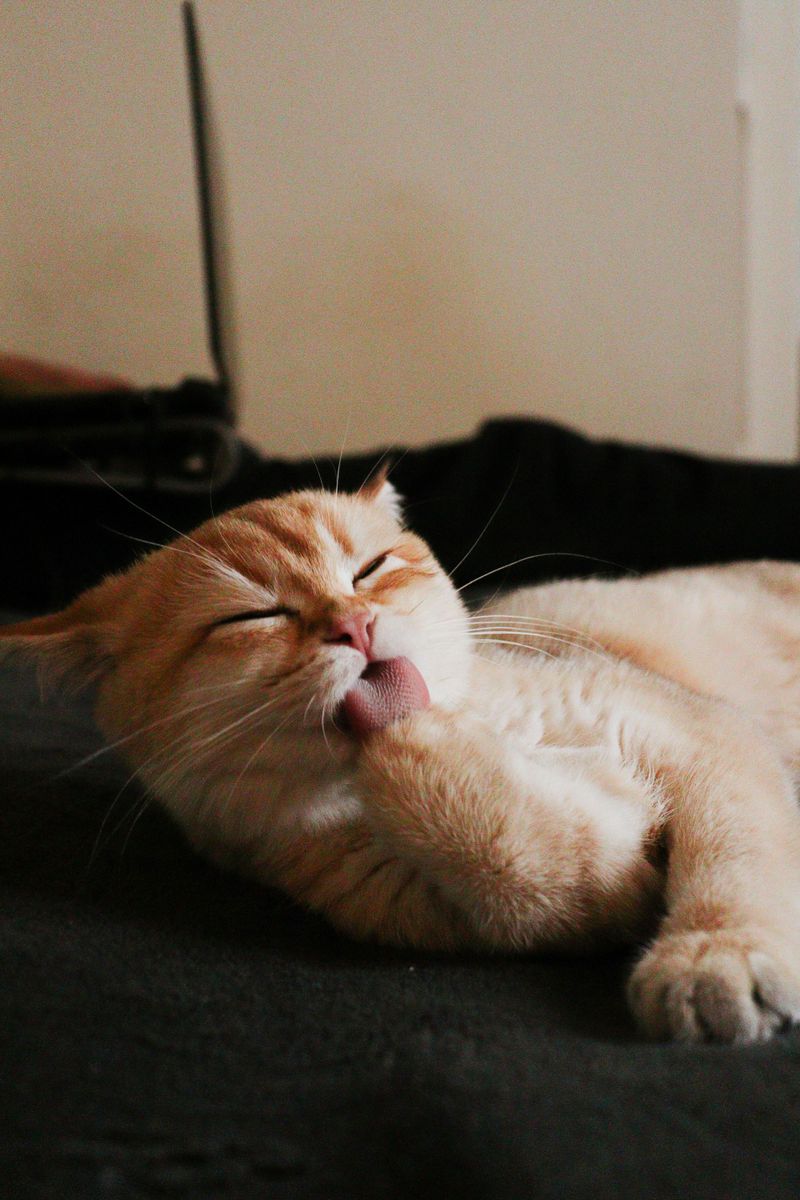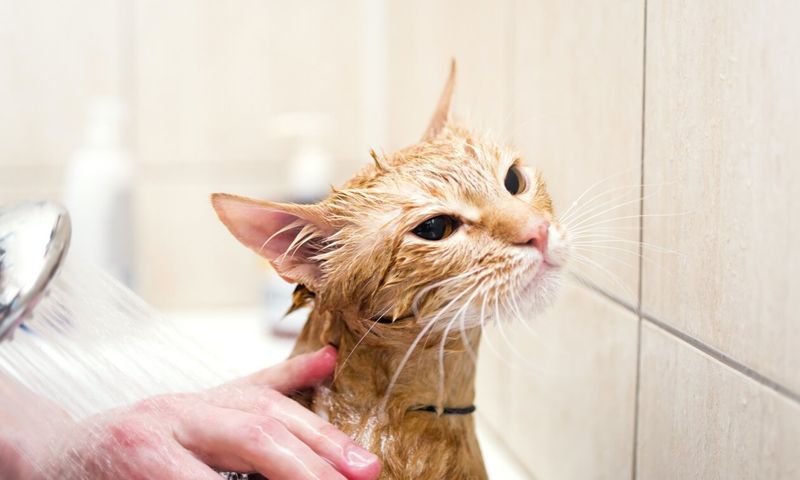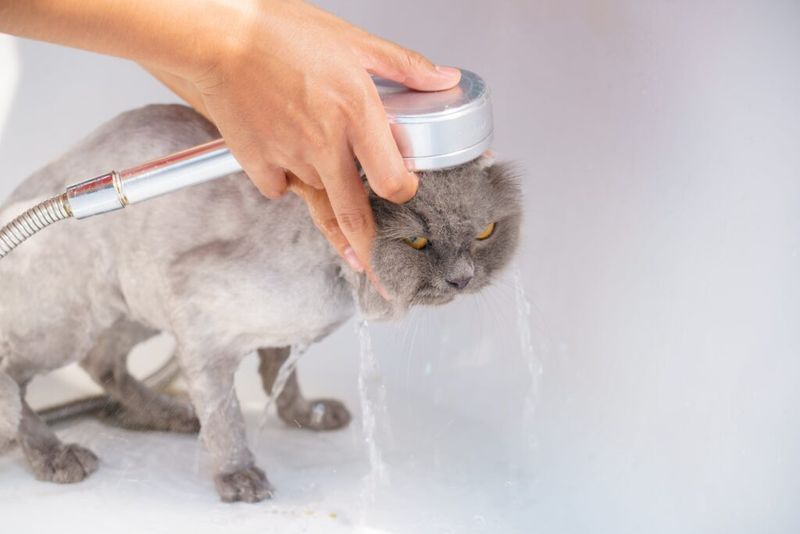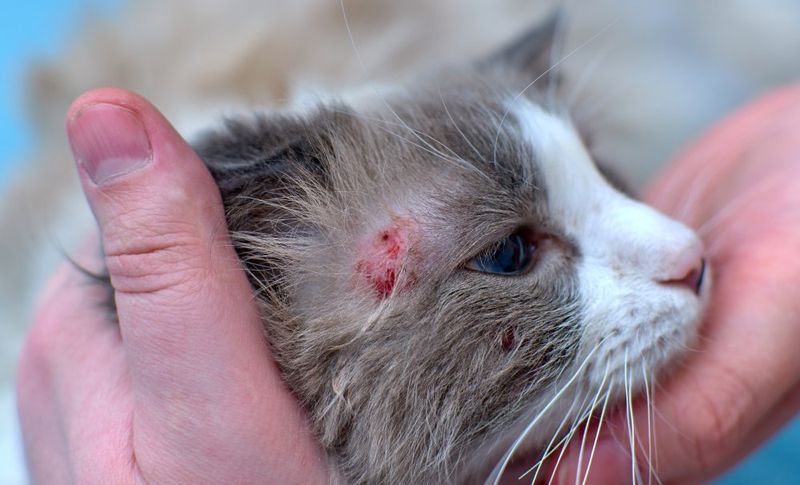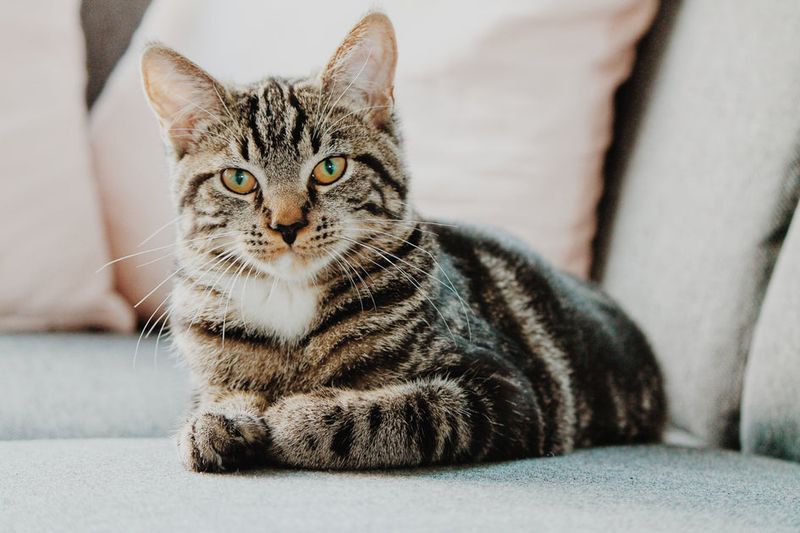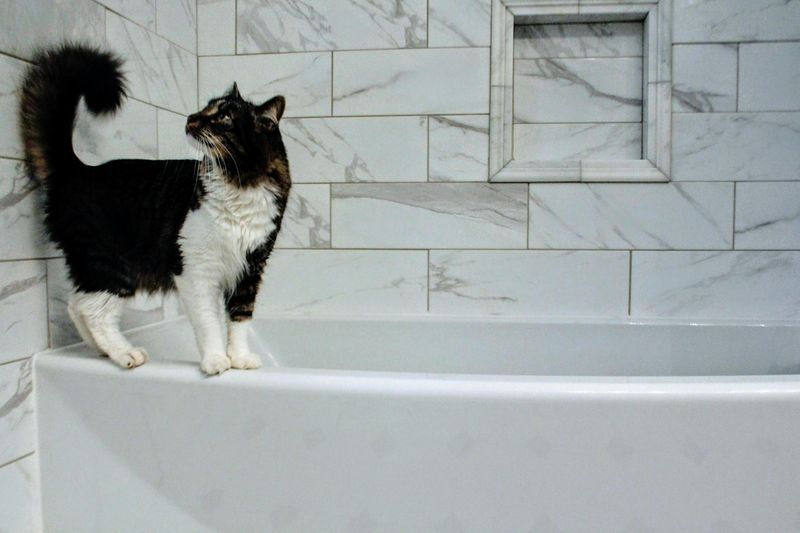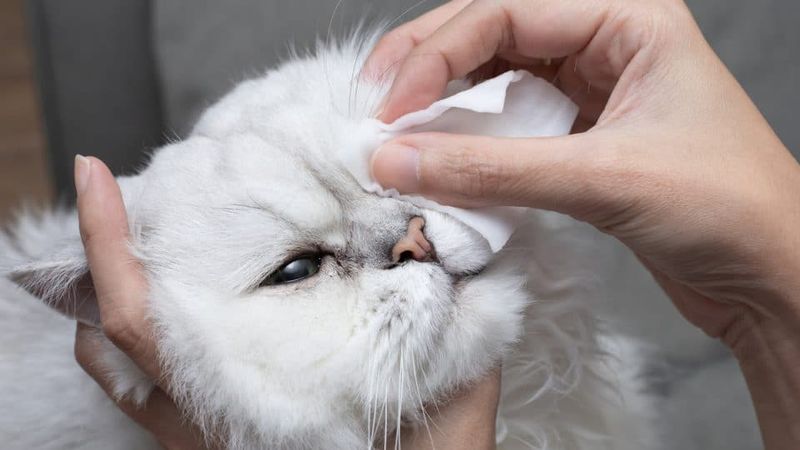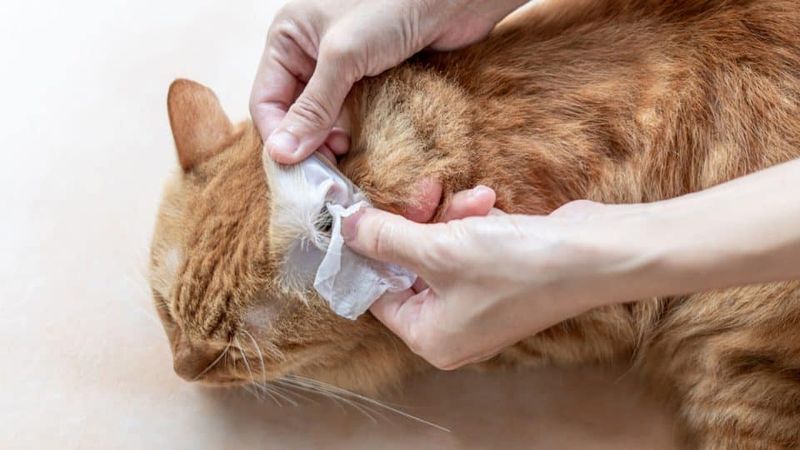📖 Table of Content:
- 1. Cats Are Self-Cleaning Machines
- 2. Bathing Can Strip Natural Oils
- 3. It Can Stress Them Out
- 4. Risk of Dry or Irritated Skin
- 5. Not All Cats Need It
- 6. There Are Gentler Alternatives
- 7. Regular Brushing
- 8. Use Waterless Shampoo or Wipes
- 9. Spot Clean with a Damp Cloth
- 10. Maintain a Clean Environment
When it comes to keeping your feline friend fresh and clean, the idea of giving them a bath might seem like the obvious solution. After all, if dogs need regular washes, cats must too—right? Not exactly. Unlike dogs, cats are natural-born groomers with a built-in cleaning system that’s remarkably effective. In fact, if you’ve ever watched your cat meticulously lick their paws, smooth down their fur, and clean behind their ears, you’ve witnessed a self-care ritual that puts most humans to shame.
Still, it’s easy to worry whether that’s enough—especially if your cat has a habit of rolling in dusty corners or mysteriously comes home with a smudge of something unidentifiable. But before you reach for the shampoo and start filling the tub, it’s important to know that bathing your cat too often can actually do more harm than good. Overbathing can interfere with their natural grooming processes, dry out their skin, and turn hygiene time into a stressful ordeal for you both.
So what’s a caring cat owner to do? The good news is, there are plenty of ways to keep your kitty clean and comfortable without resorting to the dreaded full-body soak. Below, we’ll explore six key reasons why you should skip the frequent baths—and four gentle, cat-approved alternatives that work just as well (if not better). Let’s dive in—figuratively, not literally.
1. Cats Are Self-Cleaning Machines
Believe it or not, your cat is already doing most of the hard work for you. Cats instinctively groom themselves using their barbed tongues, which are incredibly effective at removing dirt, dander, and even parasites. With grooming occupying up to half their waking hours, they’ve practically made it an art form. Evolution has equipped them with the tools to keep their coats healthy and debris-free. Unlike dogs, they don’t typically carry odors or need help staying fresh. Their natural habits are highly efficient and rarely require human interference. Overbathing can disrupt this instinctual rhythm, making your cat uncomfortable. Rather than stepping in too often, trust your feline’s natural cleanliness.
2. Bathing Can Strip Natural Oils
Underneath that soft coat, your cat’s skin produces natural oils that are vital for maintaining a balanced, healthy fur texture. These oils create a subtle protective barrier, keeping the coat shiny, smooth, and slightly water-repellent. Too many baths can wash those oils away, leaving the skin dry and the fur looking dull or brittle. This can also lead to issues like dandruff or increased shedding. Once that protective layer is disrupted, it takes time to rebuild. Even hypoallergenic shampoos can have this effect if used too frequently. Over time, your cat might experience itchiness or discomfort they can’t explain. It’s important to protect what their bodies already do well.
3. It Can Stress Them Out
Few things make a cat more panicked than a running faucet aimed at their body. Water is often a source of anxiety for cats, stemming from their evolutionary roots in dry, desert climates. Forcing them into a bath can lead to vocal protests, clawing, or even attempts to escape mid-clean. Each stressful experience chips away at their sense of safety and trust in you. Some cats may even hide or avoid you after a traumatic bath. Though it might feel like a minor inconvenience to you, it can feel overwhelming to them. For felines, being restrained and soaked is the ultimate loss of control. Avoiding unnecessary stress is a key part of keeping your cat emotionally healthy.
4. Risk of Dry or Irritated Skin
Water and shampoo can do more harm than good to a cat’s sensitive skin. Even products designed for cats may contain ingredients that irritate or dry out their skin with overuse. This irritation often goes unnoticed until your cat begins to scratch or over-groom to soothe the discomfort. A sudden increase in shedding, redness, or flaking can signal that your cat’s skin barrier has been compromised. Without moisture, the skin becomes vulnerable to cracking and infection. It’s a slippery slope from mild dryness to more serious skin conditions. Regular grooming with harsh soaps can exacerbate allergies, too. Choosing gentler cleaning methods helps avoid these risks altogether.
5. Not All Cats Need It
Most cats never actually need a full bath in their lifetime. Short-haired, indoor cats typically stay clean enough on their own with minimal help. Unless they’re elderly, obese, or have a medical condition, they are more than capable of self-maintenance. When cats encounter something sticky, oily, or dangerous, a spot clean will usually suffice. Regular check-ins with your vet can help determine if more intervention is necessary. Avoiding the tub unless truly needed respects your cat’s autonomy. Remember, cleanliness doesn’t always require soap and water.
6. There Are Gentler Alternatives
Modern cat care has evolved far beyond the bathtub. Today, you have access to cat-safe wipes, dry shampoos, grooming gloves, and more—all created with your cat’s unique needs in mind. These alternatives clean effectively without causing trauma or disrupting natural oils. They also allow for more control, so you can clean small areas without soaking your cat head-to-tail. Regular brushing can go a long way in removing buildup and preventing mats. These tools offer low-stress solutions and help your cat feel more in control. Plus, your cat may even enjoy the experience if introduced gently. Embracing these options keeps both of you happier.
7. Regular Brushing
Brushing your cat is one of the simplest yet most effective ways to maintain their cleanliness. By removing loose fur, dust, and dander, brushing prevents matting and cuts down on shedding around the house. Many cats grow to enjoy the process—some even demand it as part of their routine. It also stimulates circulation and distributes their natural oils evenly through the coat. Long-haired breeds benefit from daily brushing, while short-haired cats can usually get by with a weekly session. Tools like grooming mitts or slicker brushes can make the job easier. Beyond hygiene, it’s a great bonding moment between you and your pet. Just be patient and consistent—it pays off.
8. Use Waterless Shampoo or Wipes
Skip the tub and reach for a bottle of waterless cat shampoo or a pack of grooming wipes. These are formulated specifically for feline skin and fur, so they won’t cause irritation when used properly. Application is usually quick and easy, and most cats tolerate it far better than a traditional bath. Waterless options are especially useful for spot-cleaning dirty paws or greasy patches. You can even find wipes with calming scents like lavender or chamomile. Make sure to choose products that are labeled cat-safe and free from harsh chemicals. Over time, your cat might come to accept—and even appreciate—the process. It’s a win-win for cleanliness and comfort.
9. Spot Clean with a Damp Cloth
Sometimes, all you need is a simple damp cloth or washcloth to solve the problem. Whether it’s litter tracked on paws or a bit of food on the chin, spot-cleaning can address most messes without drama. A gentle swipe with warm water is often enough, especially for light debris. For more stubborn spots, a mild, unscented baby wipe (or cat-specific wipe) can help. Always test a small area first to make sure your cat doesn’t react negatively. The goal is to clean without overwhelming. When you avoid full-body baths, you maintain trust while still managing hygiene. This method works especially well with younger or skittish cats.
10. Maintain a Clean Environment
Cleanliness starts with the environment your cat lives in. If the litter box, bedding, or favorite lounging spots are dirty, your cat is more likely to get messy as a result. Vacuuming regularly and washing blankets or soft surfaces keeps fur and dust at bay. A clean space encourages good grooming habits in your cat as well. Litter box maintenance is especially important—not just for odor control, but also for preventing your cat from tracking waste. Regular cleaning reduces the chances of mats or sticky patches forming. Ultimately, a hygienic home supports a hygienic cat. Think of it as passive cleaning—done right, it minimizes the need for baths altogether.
